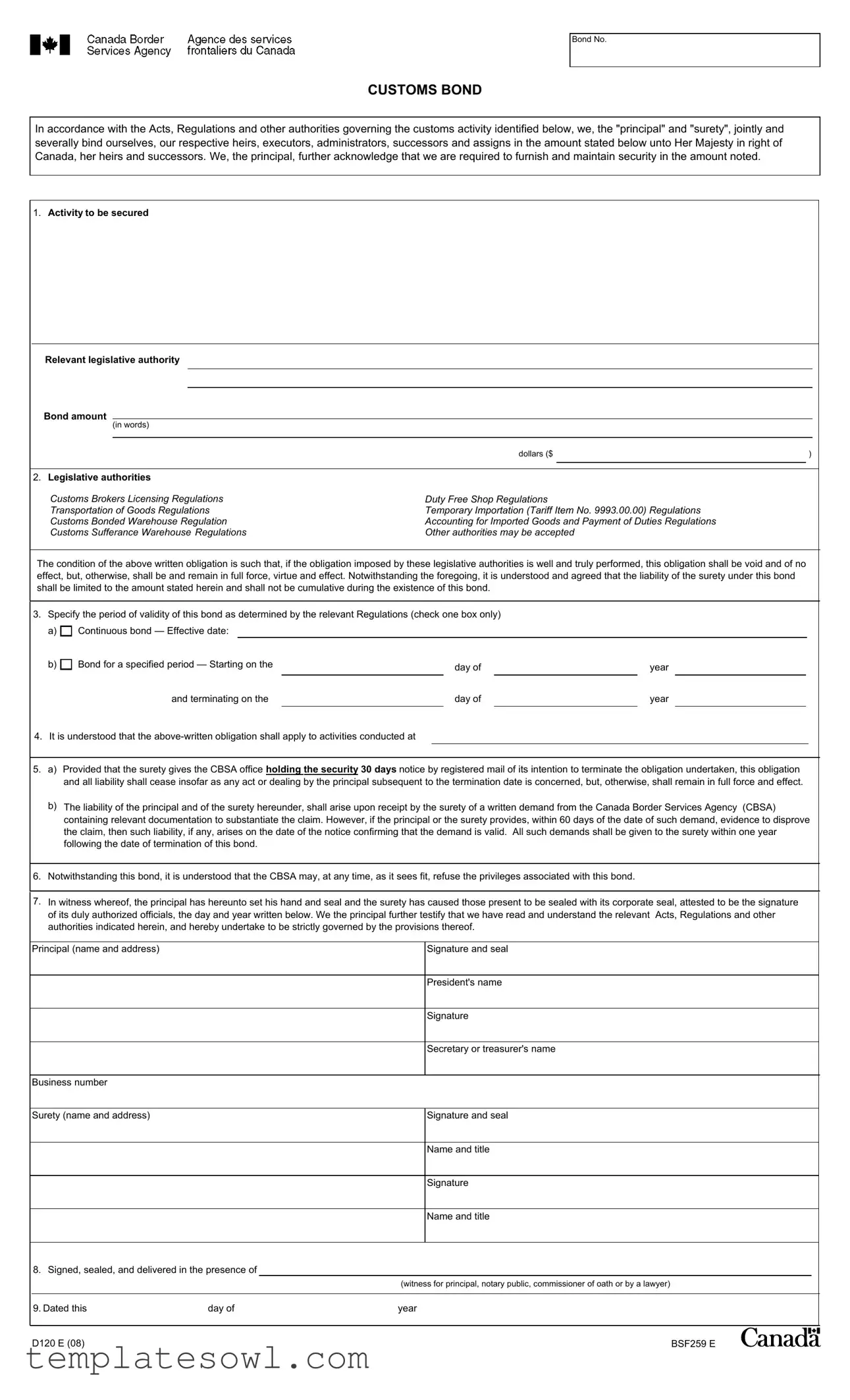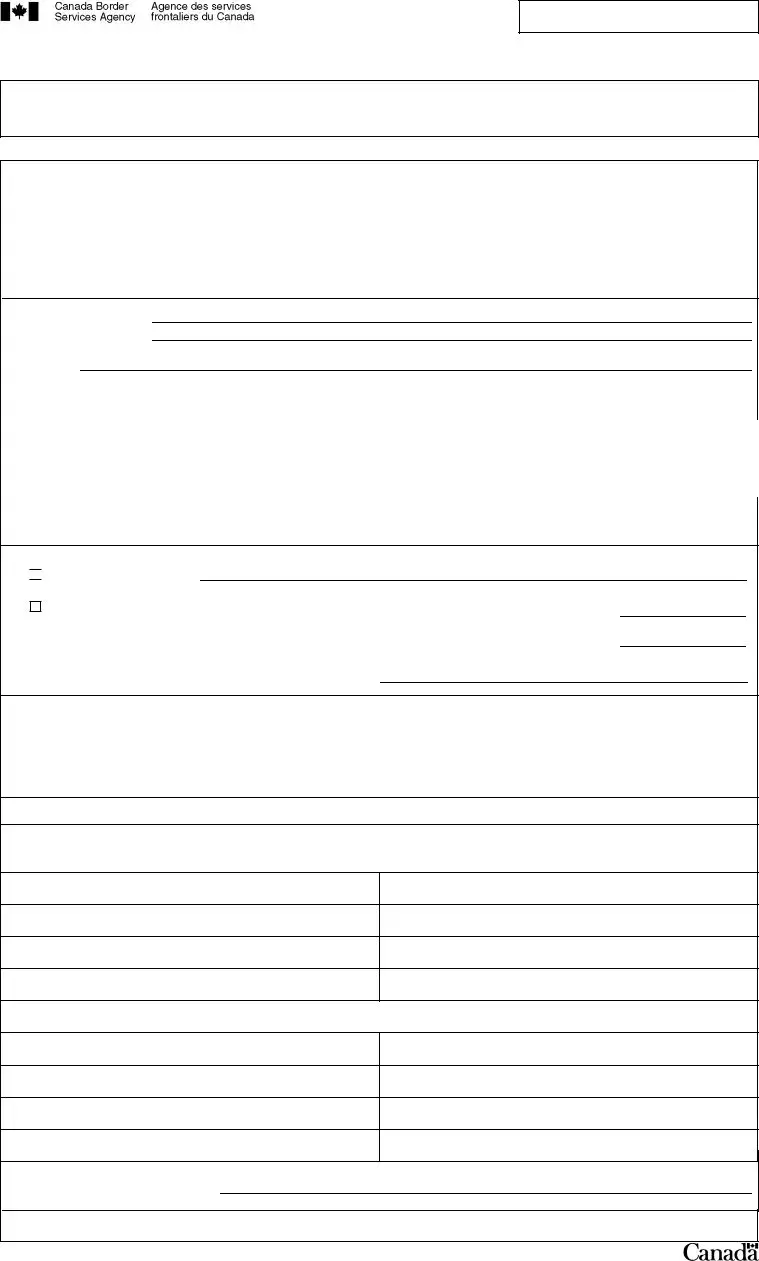Bond No.
CUSTOMS BOND
In accordance with the Acts, Regulations and other authorities governing the customs activity identified below, we, the "principal" and "surety", jointly and severally bind ourselves, our respective heirs, executors, administrators, successors and assigns in the amount stated below unto Her Majesty in right of Canada, her heirs and successors. We, the principal, further acknowledge that we are required to furnish and maintain security in the amount noted.
1.Activity to be secured
Relevant legislative authority
Bond amount
(in words)
|
|
|
|
|
|
|
|
dollars ($ |
) |
|
|
|
|
|
|
|
|
|
|
|
|
|
2. Legislative authorities |
|
|
|
|
Customs Brokers Licensing Regulations |
Duty Free Shop Regulations |
|
|
Transportation of Goods Regulations |
Temporary Importation (Tariff Item No. 9993.00.00) Regulations |
|
|
Customs Bonded Warehouse Regulation |
Accounting for Imported Goods and Payment of Duties Regulations |
|
|
Customs Sufferance Warehouse Regulations |
Other authorities may be accepted |
|
|
|
|
|
|
|
|
|
|
|
|
|
|
The condition of the above written obligation is such that, if the obligation imposed by these legislative authorities is well and truly performed, this obligation shall be void and of no effect, but, otherwise, shall be and remain in full force, virtue and effect. Notwithstanding the foregoing, it is understood and agreed that the liability of the surety under this bond shall be limited to the amount stated herein and shall not be cumulative during the existence of this bond.
3.Specify the period of validity of this bond as determined by the relevant Regulations (check one box only) a)  Continuous bond — Effective date:
Continuous bond — Effective date:
b) |
|
Bond for a specified period — Starting on the |
|
day of |
|
year |
|
|
|
|
|
|
|
and terminating on the |
|
day of |
|
year |
|
|
|
|
|
|
|
|
|
|
|
4.It is understood that the above-written obligation shall apply to activities conducted at
5.a) Provided that the surety gives the CBSA office holding the security 30 days notice by registered mail of its intention to terminate the obligation undertaken, this obligation and all liability shall cease insofar as any act or dealing by the principal subsequent to the termination date is concerned, but, otherwise, shall remain in full force and effect.
b)The liability of the principal and of the surety hereunder, shall arise upon receipt by the surety of a written demand from the Canada Border Services Agency (CBSA) containing relevant documentation to substantiate the claim. However, if the principal or the surety provides, within 60 days of the date of such demand, evidence to disprove the claim, then such liability, if any, arises on the date of the notice confirming that the demand is valid. All such demands shall be given to the surety within one year following the date of termination of this bond.
6.Notwithstanding this bond, it is understood that the CBSA may, at any time, as it sees fit, refuse the privileges associated with this bond.
7.In witness whereof, the principal has hereunto set his hand and seal and the surety has caused those present to be sealed with its corporate seal, attested to be the signature of its duly authorized officials, the day and year written below. We the principal further testify that we have read and understand the relevant Acts, Regulations and other authorities indicated herein, and hereby undertake to be strictly governed by the provisions thereof.


 Continuous bond — Effective date:
Continuous bond — Effective date: